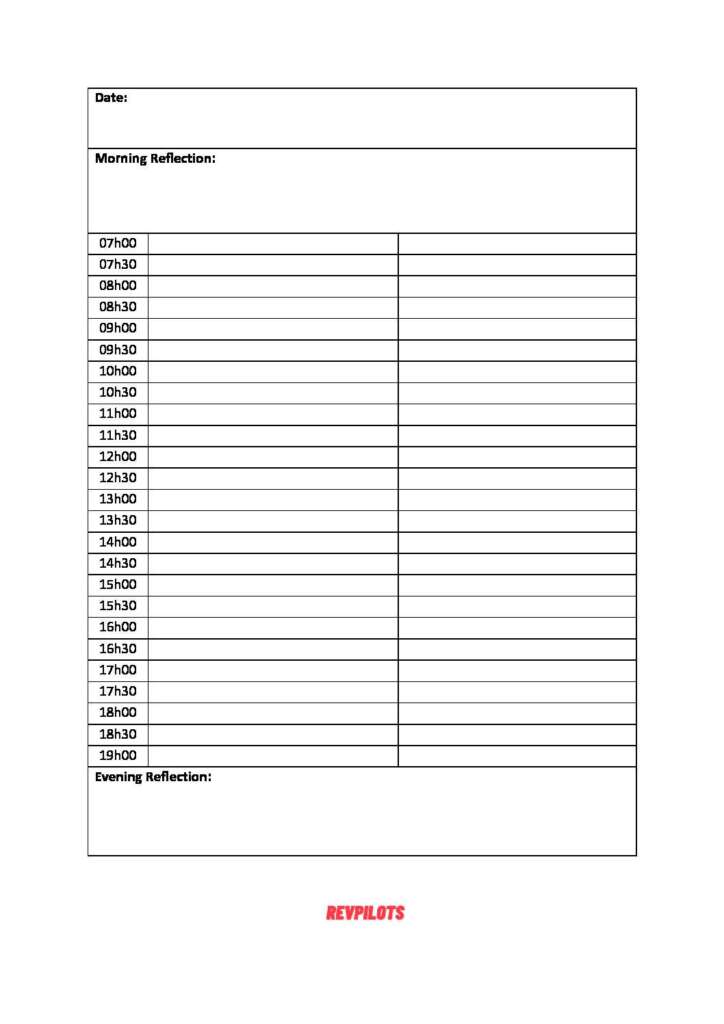Time blocking is helpful because the modern world is full of distraction. If you don’t take your own working habits seriously, you end up floating through your days at the whims of other people’s agendas and the bad habits of a lazy human mind. However, if you can harness some of the new research, tools, and strategies for optimal time management – you can squeeze the most out of your work time and then switch off effectively to enjoy the rest of life. It isn’t easy, but it’s something you can work towards and get better at.
In this article, we are going to look at one of the more powerful time management strategies that’s been taking the world by storm, and that is – time blocking.
What is Time Blocking?
Time blocking is a productivity technique that refers to looking at your daily schedule and creating time blocks where you specify exactly what you’re going to accomplish during that time. In essence, you are taking your to-do list and assigning the relevant tasks to certain times as you would with a meeting or another calendar event. Once you’ve finished time blocking a day, you should have a full schedule that includes external responsibilities as well as internal guidelines for what you want to accomplish on that day.
This simple, but elegant technique is powerful for the following reasons:
- It gives every minute of your day a job so that you aren’t drifting from task to task but can work systematically through a rigid plan that doesn’t require making more decisions than necessary. Your brain can rest knowing that it has a plan set out that it just has to follow through on.
- It puts your objectives first, so that you can stay on task, rather than letting other people insert things from their agendas into your day. The less structure you impose yourself, the more room there is for distractions and impositions from others.
- It forces you to be intentional. The enemy of productivity is procrastination, and when you time block consistently you are forced to select tasks intentionally in a way that you can avoid if you are just working from a to-do list. The mere act of planning your day provides a certain level of accountability and intentionality that you wouldn’t have otherwise.
- It opens your eyes to how you are actually spending your time. There is often a large chasm between how we think we are spending our time and how we are actually spending our time. This method will make that abundantly clear to you and force you to reckon with the reality of your daily time management.
- And many more…
While some may cringe at the thought of structuring your day like this, it really can be a secret weapon to take your productivity to the next level.
Time Blocking Method
Here’s a step-by-step guide to the time blocking method:
- At the beginning of each day (or the night before) sit down and review any appointments for the day as well as your task list. Identify those tasks that you’d like to accomplish today.
- Using a piece of paper, or an electronic tool, break your day down into 30-minute chunks, filling the empty chunks around any existing external appointments.
- Estimate the time that is needed for each of your chosen tasks and make sure that you are not overestimating what is possible in one day.
- Keeping in mind your normal energy levels throughout the day and any other relevant factors, slot those tasks into the open chunks accordingly.
- You should now have a full calendar day where every minute has an associated task.
- Now, as you go through your day, focus on sticking as closely as you can to the time block schedule you’ve set out for yourself.
- At the end of the day, look back on how the day went and note any relevant insights that might help you plan better for the next day.
- Rinse and repeat.
That’s the basic framework. It’s simple, but incredibly powerful when done consistently.
Now, let’s look at how we can break those chunks down even further to maximize our productivity.
The Pomodoro Method
When it comes to time management, one of the canonical techniques is a concept called the ‘Pomodoro method’. It’s deceptively simply, but when you stick to it consistently, it becomes incredibly powerful. ‘Pomodoro’ means tomato in Italian and it became the name for this method because the original idea made reference to a tomato-shaped kitchen timer that initially inspired the format.
The Pomodoro Method Explained:
- Pick a specific task that you want to get done.
- Set a timer for 25 minutes. (This is where the tomato kitchen timer came in)
- Work on that task, without distraction, until the timer buzzes.
- Take a 5 minute break. Stretch your legs, get away from your computer, etc.
- Repeat as required.
- Every four Pomodoro’s, take a longer break of 15-30 minutes.
What this does, in essence, is breaks down your tasks into small chunks of time where you can focus on single-tasking and moving the needle. As soon as you start to fatigue and run out of motivation, the break is just around the corner and you can regroup before the next chunk. This is time blocking in action, on a micro scale – and it can be the catalyst for really significant improvements to overall productivity if you stick with it.
It’s remarkable just how much more you can get done when you are breaking up your sessions like this and utilizing intense focus for short periods of time, followed by structured breaks where you can do other things guilt free. It’s leveraging human psychology for our sake, to improve what we are capable of.
Top Tips for Getting More Done
Time blocking can be a bit overwhelming at first and it takes some time to get used to. Here are some tips to keep in mind that will help you put the method into practice more effectively:
- Don’t underestimate how much time a task takes. We tend to underestimate how much we can accomplish in a day when we haven’t tracked our time seriously before. When you start time blocking you will find that you severely underestimate the time needed for certain tasks, sometimes by orders of magnitude. That’s why it’s a good idea to add a bit of buffer time on the end of every task to account for that tendency, at least at the beginning.
- Don’t feel like you can’t adjust the plan. Even though a time blocking plan is somewhat rigid, life can sometimes get in the way and force you to change your plan. Don’t let this get to you. When an interruption comes up, all you have to do is deal with it and then come back to make a new plan for the time that is remaining. Time blocking is never perfect, so take it easy on yourself and get back to the schedule when you can.
- Don’t time block your leisure time. Some people want to go the whole way and time block every second of their day including their free time. We’d suggest that you don’t do this, and rather just keep the time blocking for your work time. Your leisure should be more freeform and spontaneous.
- Add a block or two for urgent, unplanned items. Every day comes with things you couldn’t predict and so it can be a good idea to make one of your blocks an administrative one where you can tackle anything urgent that’s popped up during the day. This gives you the comfort to know that you can keep up no matter what curveballs the day throws to you.
- Schedule the necessary breaks. Don’t forget to include blocks for lunch and some other shorter breaks so that you can regroup during the day. Quality beats quantity and no one can go full tilt for the whole day.
- Learn from the day before. When you start, it will be difficult to get the time blocks exactly right, but as you do it more and more, you can be more accurate and precise with your planning. So be sure to reflect on how your schedules have performed in previous days and take those insights forward to continue iterating on your time blocking.
Time Blocking for Salespeople
This method is especially valuable for salespeople who tend to have very unpredictable and chaotic schedules. As a Business Development Representative, SDR, or AE, you always have to split your time between managing deals/leads that are already in the pipeline and/or going out to look for new opportunities. The temptation is always to work on ongoing deals because there is a state of urgency and the leads are already qualified – which gives you a better chance for success. As a result, it’s easy to deprioritize new prospecting and sleep on coming up with new creative outreach ideas.
This is a big mistake though. If you don’t put the regular work into looking for new sales opportunities, then it will have a negative impact on your performance over the medium to long term. You have to find a way to balance your time so that you can integrate prospecting as part of your day.
Time blocking is a great way to ensure that you get the balance right. Salespeople should be blocking out blocks of time that are solely dedicated to sending emails and making cold calls – to look for new business. If you do this consistently, you’ll know that you’re dedicating a significant proportion of your time to building your funnel and when that time is up, you can then shift focus to managing other ongoing deals.
It’s also important to block this time out strategically. Your outbound blocks should be scheduled at times of the day where you are most likely to reach the people you’re connecting with. This will vary depending on the industry and the level of your target audience – but if you spend some time testing different solutions, you can identify the optimal time to work on these tasks and time block accordingly.
Time Blocking on Google Calendar
One of the most common ways to implement time blocking is to use a calendar system like Google Calendar. This works very well because we are all using electronic calendars already and so it fits very neatly into our workflow. It also plays a psychological role because an event on the calendar feels more solid and is not easy to ignore – because of how we’ve been conditioned to view work calendars.
We can use this to our advantage and schedule our time blocks as events on our Google Calendar. Here’s how a potential plan might look like:
- Schedule a recurring calendar event for 15 minutes every morning for when you are to create your time block plan.
- Using paper or your digital task manager, identify the tasks and relevant time blocks that you’re going to accomplish for today.
- Create a new calendar event for every block, adding the name of the task as the event title.
- Add any additional notes in the description section to help you keep everything in one place.
- You might even consider color coding different types of tasks or using different calendars to distinguish between different categories.
- Once you have filled up your day, it will then sync with all devices and you’ve got yourself a time block schedule on your calendar.
Once all that is set up, the trick is to follow that schedule as if those blocks were external appointments that you couldn’t miss. By taking your own schedule seriously, you grow trust in yourself and in your systems so that you can build momentum for your own productivity.
You may be interested in these Calendly Alternatives.
Time Blocking Template
The best way to get started with time blocking is with a template that automates some of the structure so you can just focus on the actual method itself. We’ve created a basic time block template for you to use which can get you up and running as quickly as possible.

The template includes room for the date, two reflection blocks to jot down notes at the beginning and end of each day. Then there are blocks for every 30-minute slot, split into two columns so if your first plan is disrupted, you can make a new one on the go.
You can download the template here, free of charge, in .pdf format or .docx format.
The Best Time Blocking Apps
Time blocking can be accomplished in an analog way using something as simple as paper and pen, but if you’d prefer to do things digitally, then there are a range of tools that can be really useful for time blocking. Here are just a few of them:
- Google Calendar. We’ve spoken about this one above and its one of the best options because of how seamlessly it integrates into our current workflows. It is free, flexible, and syncs across devices making it a really useful way to implement time blocking consistently.
- Fantastical. If you’re looking for a digital calendar with more advanced functionality, look no further than Fantastical. Its best feature by far is its natural language processing which makes the process of adding time blocks to your calendar that much easier and more efficient. It will sync with all devices and makes time blocking a breeze. The only drawback is that its only available on iOS, so if you’re not in the Apple ecosystem, you’ll need to go with something else.
- Clockify. Time tracking software can be really useful for tracking how long tasks take so you can plan your blocks more effectively, and Clockify is a wonderful free time tracking app that gives you all the functionality you need and nothing more. It works across all devices and is a great way to keep yourself accountable to the time blocks you set for yourself.
- Todoist. To keep track of the tasks that you’re going to time block, you can use a task management app built directly for that purpose. Todoist is a great option for this because of its sleek design and powerful functionality that make it one of the most comprehensive list managers out there.
- TimeBlocks. This is a mobile planner and calendar app that is designed to help with streamlining business and personal scheduling. What makes this app special is the focus around color coordination which makes your time block schedule very easy to understand at a glance.
—
So, there you have it – the ultimate guide to time blocking. When done well, this method can free you from the overwhelm and allow you to focus on what really matters. The intentionality and accountability generated by this technique is worth its weight in gold.
We encourage you to try it out and see how it transforms your work days. Once you can grasp how powerful it is, we have no doubt that you’ll be able to leverage it to take your productivity to a level that you never could have imagined.



